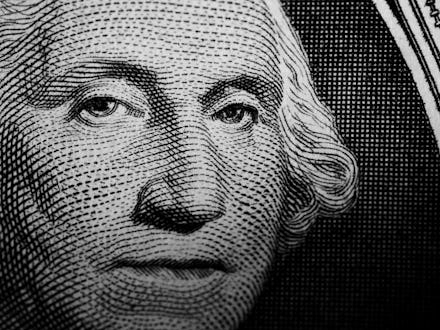3 Charts Show How Young Donors Could Change the Political Landscape

The political power of the donor class is well established, and could be exacerbated by recent Supreme Court decisions and abysmal voter turnout. This donor class is disproportionately white, male and old.
But as millennials become more politically active, spurred in part by the campaigns of Barack Obama and the rise of progressive online fundraising operations, a new, more diverse, more progressive and younger donor pool is rising in influence. The question is how this will affect policy.
Who young donors are: Using data from the Cooperative Congressional Election Study, a 50,000 person survey performed each election year, political scientist and campaign finance expert Brian Schaffner and I found interesting differences between young donors, non-donors (which includes voters and nonvoters) and voters in the 2012 election cycle.
First, demographically, the young donor pool remains stratified. While 66% of all CCES respondents between the ages of 18 and 34 were white, 72% of young donors were. While 54% of respondents were women, only 43% of donors were. Finally, only 9% of the non-donors reported an income over $100,000, while 18% of donors did.
That stratification is merely among donors who made contributions of any size. The median donation was $50 and fewer than 5% of young donors gave more than $500, suggesting these young people are mostly part of the more diverse small donor pool (among the 31,976 biggest donors to federal elections in the 2014 cycle, the median donation was $14,750). At the highest levels, the donor class is still dominated by older wealthy white men.
Their politics: Turning to partisanship, we find that young donors are far more likely to identify as strong Democrats, while they are only slightly more likely to identify as strong Republicans. Indeed, while 65% of young donors identify as Democrats, only 28% identify as Republicans, compared with 53% and 31% of the non-donor population. This suggests that the Democratic party has done a far superior job of motivating young people to donate money in small amounts:
Given the conservative tilt of the current donor class, these results are somewhat surprising. They may augur a future donor class that has more ideological and racial diversity, but it's difficult to tell: Younger conservatives may become more mobilized to donate more in the future. In addition, it's possible that while small money donors are more progressive, young big money donors will prefer conservatives. Further, most of the respondents have yet to reach peak earning potential. Since donors tend to be older, the donor class may lag behind the general population in racial diversity and progressive views.
Where young donors stand on the issues: Finally, it's worth examining the policy views of young donors and voters. We looked at three hot button issues that disproportionately affect young people: immigration, climate change and abortion. The data show that young donors are more progressive than young voters — even as those young voters tend to be more progressive than the population as a whole. Young donors are more likely to support action to address climate change (70%, compared to 63% of voters) though few donors or voters deny the reality of climate change (17% of each group).
Young donors are more likely than non-donors to support granting legal status to undocumented immigrants, with 64% supporting a path to citizenship, compared with 56% of young voters. While 28% of young voters want to overturn the 14th Amendment and deny legal status to the American-born children of immigrants, 22% of donors support such a law.
Young donors are also more favorable to liberal abortion laws: While 47% of young voters say that "By law, a woman should always be able to obtain an abortion as a matter of personal choice," 58% of young donors agree. While 15% of young voters say that, "By law, abortion should never be permitted," only 7% of young donors agree.
The current donor class is older, whiter, richer and dominated by men. In many ways, the young donors we examine share those characteristics, though the gaps aren't as large. The current donor class is also more socially cosmopolitan, even among Republicans. However, while the current donor class tends to lean toward the right, the evidence suggests that young donors are more progressive than both donors as a whole and young people. How this development will affect American politics remains to be seen.